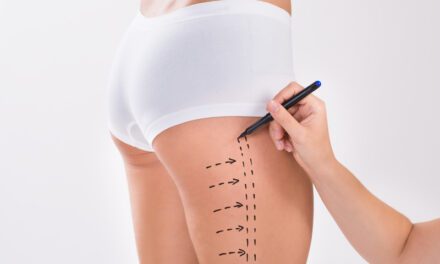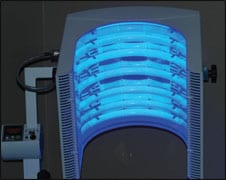Does rhinoplasty ever seem to change? In reality, physicians and cosmetic surgeons are constantly working to improve their techniques. They work to minimize the pain and discomfort experienced by the patient, and to maximize the effects of the rhinoplasty with the most effective, yet minimally invasive techniques possible.

The goal is to have an optimal outcome in which both the surgeon and the patient are happy with the results. This includes having the least possible pain during the recovery phase of the rhinoplasty and a low likelihood of complications postprocedure.
Ideally, the results will be both aesthetically pleasing and functionally appropriate, providing the patient with both the look and the function they desire, be it in correction of appearance, or repair of a breathing or respiratory impairment.
In keeping with the most current information by the leading surgeons in the field, PSP recently spoke with Jonathan Sykes, MD. Sporting 25 years’ experience in performing rhinoplasty, and with a remarkable range of accomplishments and endeavors, he is currently the professor and director of facial plastic and reconstructive surgery at the University of California at Davis Medical Center in Sacramento.
PSP: What would you say are the most significant differences in techniques/technology used for rhinoplasties now versus 10 years ago?
Sykes: The most significant difference now versus 30 to 40 years ago when rhinoplasty was first popularized is that we look at the nose differently now. That has made us do a different kind of operation in a number of different ways.
Structurally, now, we leave the nose much stronger. There is less cartilage removed, and the operation in general is less reductive and has more augmentation, which leaves a nose that does better structurally over time with both healing and age.
We look more now at overall balance in the face rather than just a smaller nose with the goal being one that does not look “operated on,” but that is both optimally functional and remains aesthetically pleasing with age. To me, this is the first difference, that function is more important than aesthetics, and this is something that has just been evolving over about the past 10 years.
PSP: How minimally invasive can rhinoplasty get, and is there a preferred technique?
Sykes: That’s the next thing that has changed. Open rhinoplasty, or the external approach—which became popular about 15 years ago—is more an “approach” rather than a technique.
This approach allows much better visualization of the internal structure of the nose than the closed or endonasal approach. We can lift back the covers to see more accurately what the defects may be, and allows us more control. It allows more direct contact, the ability to suture in grafts, and better diagnosis. It is not the only approach, and not for every patient, but for some—particularly those with deviated septums—the open approach is better. For less complicated cases, the closed approach is good. I use both depending on the goal for the individual patient.
PSP: How are the issues of pain, swelling, and bruising addressed perioperatively/postoperatively? How is the recovery phase of the rhinoplasty?
Sykes: Most of my patients do not have significant pain or bruising. It is far less than it used to be for several reasons:
- A lot of the pain associated with rhinoplasties in the past was related to the packing used. Much less, if any, is used now.
- A surgical sponge is often used now, which is much smaller.
The result of this change is less congestion experienced postoperatively, and therefore a decreased number of headaches associated with that particular issue. The incidence of congestion and headaches and associated potential complications postoperatively is about 80% less with the use of smaller to no packing of the nose.
Again, the tendency not to pack the nose now is more of a philosophical difference than a technological one. We are still doing the same kind of operation, adjusting the cartilage and bone and things like that, but the fact that we don’t use packing really makes recovery and healing better.
This philosophical difference, the tendency not to pack the nose, makes a huge difference in reducing the postoperative complications previously associated with rhinoplasty. There is very little swelling. Generally, patients don’t need the pain meds over 2 to 3 days, and the bruising and swelling associated with a rhinoplasty is gone in less than a week.
PSP: Is there a lot of need for revisions or secondary rhinoplasties due to previous surgical procedures? If so, why?
Sykes: I do a lot of primary rhinoplasties and, yes, a lot of secondary rhinoplasties. These are the result of a number of things. There can be dissatisfaction due to poor communication preoperatively between the patient and the physician. It can be the result of unfortunate healing … the surgery was done pretty well, but the healing didn’t go as well as expected, and they have need of some minor revision.
It can also be that the surgeon is just not doing a good job, and is using poor technique or insufficient planning. The other reason for rhinoplasty revisions is the patient who comes in with unrealistic expectations. They have had a well-done rhinoplasty, but they want revisions that may not be in their best interest. I get consults for secondary rhinoplasties for all of these reasons.
PSP: Do you think there are technological advances possible to make rhinoplasty less invasive?
Sykes: No, I don’t think there are. In fact, it is more of an operation now than it used to be. We take more time now, and the procedure is actually more complex. With the use of more grafts and more augmentation/less reduction, it takes more time. The only way to be less invasive would be just to not do it. The external rhinoplasty has more to [it], making it last longer and making it strong now and avoiding a rejuvenation surgery. Getting these results is worth taking more time, rather than doing less and having a “do-over.”
The understanding of the interplay between function and aesthetics is so much better now that we get better results when we take more time. We leave them with a more structurally sound nose that withstands healing and time.
PSP: With regards to all the noncore practitioners now getting into aesthetic medicine, what issues are we likely to see, and how can current regulations/certification programs either help or alleviate those issues?
Sykes: There is no question that more noncore practitioners are trying to get into more and more areas of aesthetic medicine—and this term is used in a very broad sense. The biggest problem with this is that to be good at rhinoplasties, you have to understand the anatomy and physiology of the nose both in its normal state and its abnormal state, and the noncore practitioners simply do not have this understanding.
For example, it is not uncommon for someone to go to the dermatologist, who is a core aesthetic care provider, and have filler injected into the nose for a defect. I don’t feel this is appropriate at all because they just don’t have a good understanding of the nose.
The regulatory guidelines related to what surgeons do include all physicians and practitioners but are not standardized for different procedures. It is basically left up to the surgeon to make their own call, to “self-regulate.” Unfortunately, not all are good at recognizing their own limitations and operating within their scope of practice.
Just because a surgeon has studied and practiced within a certain specialty does not mean they can take a weekend course and be competent to do rhinoplasty. It is one of the most complex and difficult aesthetic operations that we perform, and it should not be taken lightly. Even when done by very good surgeons, there is some revision rate. When done by untrained surgeons, the revision rate becomes very high. The understandings and complexities of healing are just not there.
There is simply not a very good regulatory system in place at this time to determine who can do what. I think the subspecialty that I am in does some of the best rhinoplasties in the world by subspecialty. On a more positive note, I think other specialties are beginning to gain a better understanding of the complexities of the nasal structure.
Connie Jennings is a contributing writer for PSP. She can be reached at [email protected].






